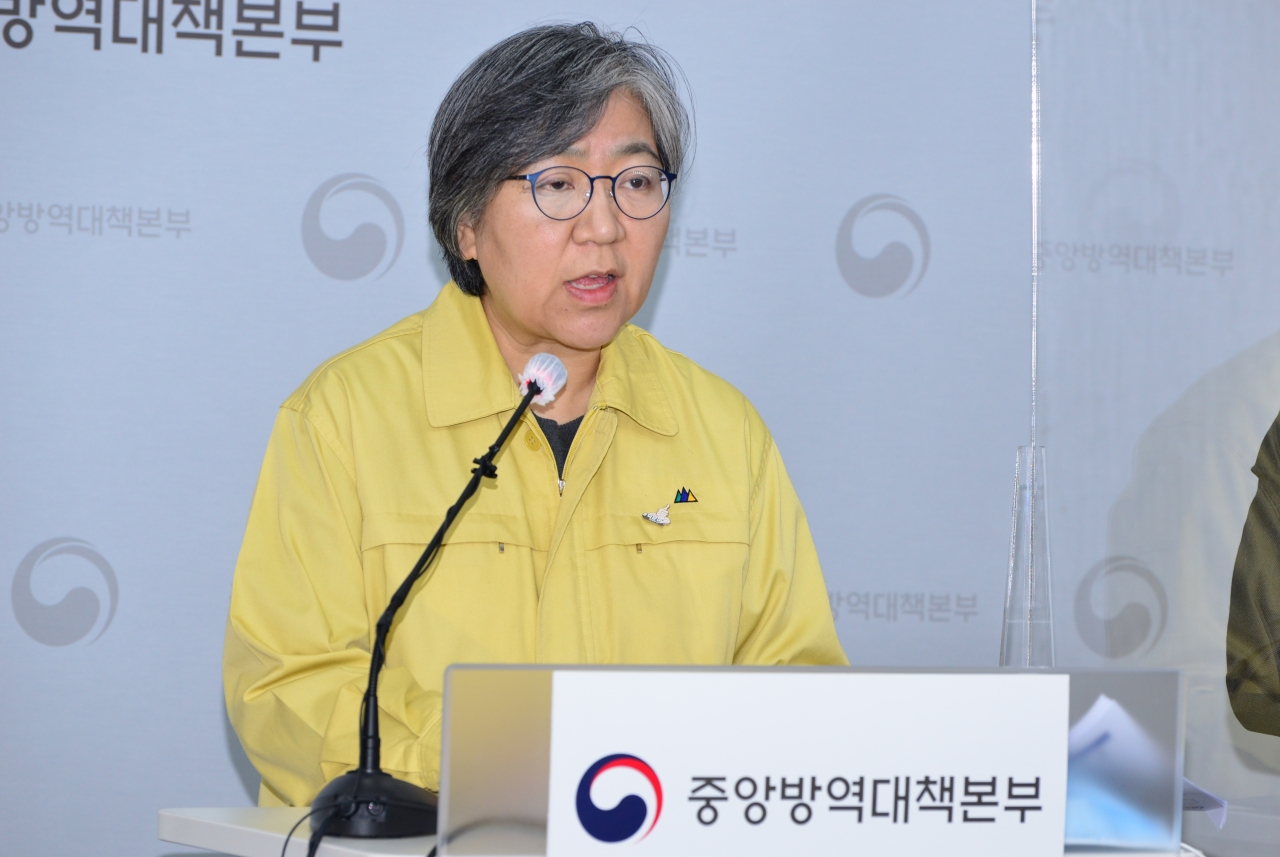
Korea stopped short of the most stringent restrictions in its COVID-19 playbook on Monday, amid a record-shattering surge in infections.
The Korea Disease Control and Prevention Agency’s chief Jung Eun-kyeong said in a news briefing that the nation was facing “the worst phase yet in the pandemic,” urging people to abide by social distancing rules.
“Cancel all plans and stay at home as much as possible. Wear face masks in any social situation, indoors or outdoors,” she said.
For the second consecutive day on Sunday, Korea set a record single-day rise in new cases at 1,030. The figure could hit up to 1,200 in just a few days, Jung warned.
Based on metrics such as case growth and hospital bed availability, Korea is now eligible for the top tier. But the government is once again hesitating to move up the social distancing ladder just yet.
At Sunday’s meeting of the government’s COVID-19 task force, President Moon Jae-in said the strictest Tier 3 of social distancing “should be the last resort.” He then called on the task force to “make the call when it’s deemed unavoidable.”
Prime Minister Chung Sye-kyun reiterated Monday that Tier 3 “should be saved for the absolute worst,” and that the decision would come “if there is enough consensus across ministries and municipalities.”
While the president stressed “the most important thing is to act quickly,” experts say Korea’s response has been anything but. Infectious disease specialist Dr. Eom Joong-sik said over the phone that Korea has been “at least days, sometimes weeks late” in introducing interventions when called for throughout the crisis. “While the decision is being stalled, new outbreaks are spawned in communities,” he said.
“This fumbled implementation means the measures would have to be longer and harsher to achieve the desired impact.”
Another infectious disease specialist Dr. Kim Woo-joo said to avoid a health care collapse, social distancing measures of higher intensity appeared necessary.
“The government already revised the guidelines to discharge patients earlier, but hospitals are still scrambling to provide beds.”
Hospitals around the country are nearing full capacity, leaving patients stranded. As of Saturday, 580 patients in the capital area were without a bed and waiting to be admitted. To ease the shortages, COVID-19 wards built from shipping containers are being set up in Seoul and Gyeonggi is turning a college dorm into a treatment center.
There are 10,795 patients currently undergoing treatment at either hospitals or nonhospital facilities, of whom 185 are severely or critically ill.
Korea on Monday confirmed 718 cases -- 682 locally transmitted and 36 imported -- down 312 from the previous day, likely due to fewer tests being conducted. The cumulative number of official cases is 43,484.
The test positivity rate, the percentage of people testing positive out of all those who are tested, has been between 3 and 4 percent last week, Jung said, indicating high transmission in the community.
Now public health officials are encouraging people to seek testing even if they are not experiencing symptoms. In an effort to ramp up testing, 56 additional testing sites have been set up around Seoul to run for the next three weeks from Monday.
So far in December, an average of 4.73 people have died each day, marking a steep increase from August’s average of 0.74. Thirty-eight people died in the last seven days, with the death toll now reaching 587. People aged 70 or older make up 82 percent of the deaths. No one under the age of 30 has died.
By Kim Arin (arin@heraldcorp.com)








![[Graphic News] More Koreans say they plan long-distance trips this year](http://res.heraldm.com/phpwas/restmb_idxmake.php?idx=644&simg=/content/image/2024/04/17/20240417050828_0.gif&u=)
![[KH Explains] Hyundai's full hybrid edge to pay off amid slow transition to pure EVs](http://res.heraldm.com/phpwas/restmb_idxmake.php?idx=644&simg=/content/image/2024/04/18/20240418050645_0.jpg&u=20240419100350)






![[From the Scene] Monks, Buddhists hail return of remains of Buddhas](http://res.heraldm.com/phpwas/restmb_idxmake.php?idx=652&simg=/content/image/2024/04/19/20240419050617_0.jpg&u=20240419175937)

![[KH Explains] Hyundai's full hybrid edge to pay off amid slow transition to pure EVs](http://res.heraldm.com/phpwas/restmb_idxmake.php?idx=652&simg=/content/image/2024/04/18/20240418050645_0.jpg&u=20240419100350)

![[Today’s K-pop] Illit drops debut single remix](http://res.heraldm.com/phpwas/restmb_idxmake.php?idx=642&simg=/content/image/2024/04/19/20240419050612_0.jpg&u=)